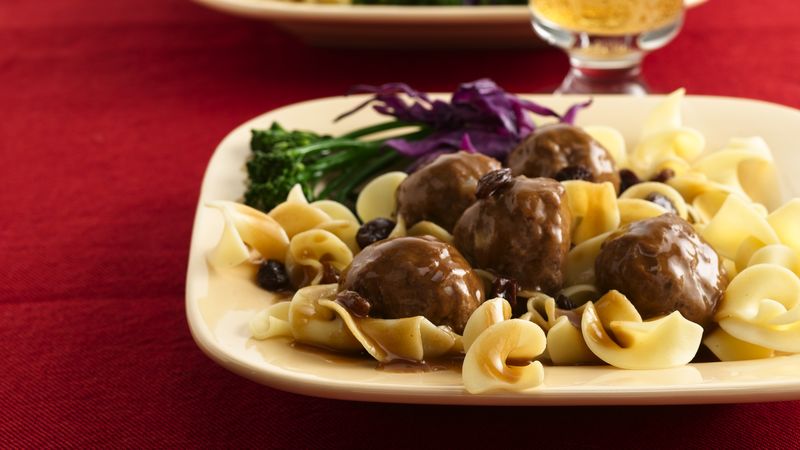

Makes about 23 meatballs (two or three servings) The cookie element makes this dish a bit sweet (there’s some brown sugar in there too!), so to balance out the flavors, consider serving it with a neutral-tasting side dish like green beans, or even something bitter such as arugula/rocket or endives. The sauce is made with – hold onto your hats – gingersnap cookies! My mom makes her own gingersnaps, but I used Lotus brand speculoos, which have a similar enough taste. What sets this recipe apart is its special ingredient. My mom always served the meatballs over a fettucine-type pasta, but they could also be paired with rice or presented on a plate skewered with toothpicks for a buffet dinner. It’s a shortcut version of sauerbraten, a beef pot roast that’s marinated in vinegar over days and days (the name means “sour roast”), although I liked the meatball alternative better in any case. I’ve taken more of an interest in my heritage in recent years though, so when I heard about this little holiday I decided to pay homage to it with this vegan version of a favorite family dish. I half-heartedly studied the language for a semester as an undergrad, but then when a scheduling conflict made the second semester inaccessible, I enrolled in an Arabic class instead.

But it may just be that it doesn’t stand a chance against Oktoberfest, a much bigger deal for the gentle folk of this state.Īs my own family is mostly German on both sides, and almost everyone I knew growing up had this same background, Germany never seemed very exotic or interesting to me when I was younger. I’ve never known this particular day to be celebrated in Wisconsin, which is home to countless people of German ancestry. Then in 1983, sensing an auspicious anniversary, Ronald Reagan brought it back. It seems it was created in 1883 but got put on the shelf during World War I, when German descendants wanted to keep their roots on the down-low. Ladle the sauce over the roast and serve.Earlier this month, I discovered there’s a National German-American Day (October 6th) in my home country. Stir in the sour cream until fully incorporated. Slowly pour in the strained liquid and cook, while stirring, until thickened. Melt the butter in the now empty dutch oven over medium heat then stir in the flour until well combined.Strain the liquid in the pot through a mesh strainer and into a separate container and set aside. Transfer the roast to a serving plate and set aside.Simmer while covered for 2 hours then flip the roast and simmer while covered for 2 more hours or until beef is tender. Place a lid on the pot and reduce the heat to medium-low. Return the roast to the pot and bring to a boil. Pour the marinade in the pot and scrape the bottom of the pot with a wooden spoon to release any stuck on bits.Transfer the roast to a plate and set aside. When the oil is hot add the roast and sear until well browned on all sides, 3 to 4 minutes per side.

Heat the oil in a dutch oven over medium-high heat. Set the marinade to the side and pat the roast dry with paper towels then season the roast generously with salt & pepper. Cover and the bowl and refrigerate for 72 hours (3 days) flipping the roast over in the marinade once a day. Pour the marinade over the roast and flip the roast a couple times to coat. Make the marinade in a separate container by mixing together the vinegar, wine, bay leaves, peppercorns, cloves, and onion.


 0 kommentar(er)
0 kommentar(er)
